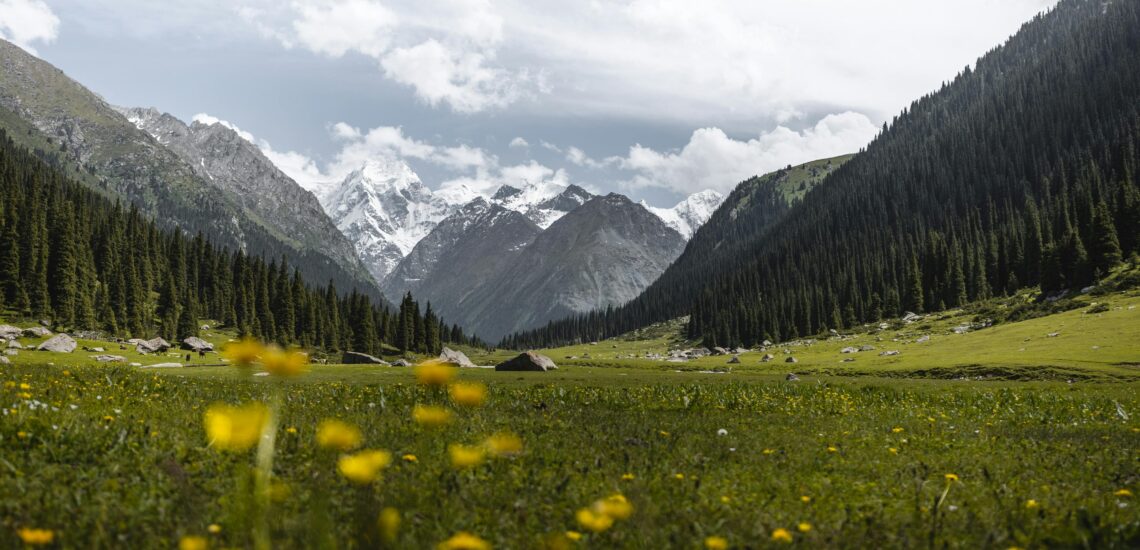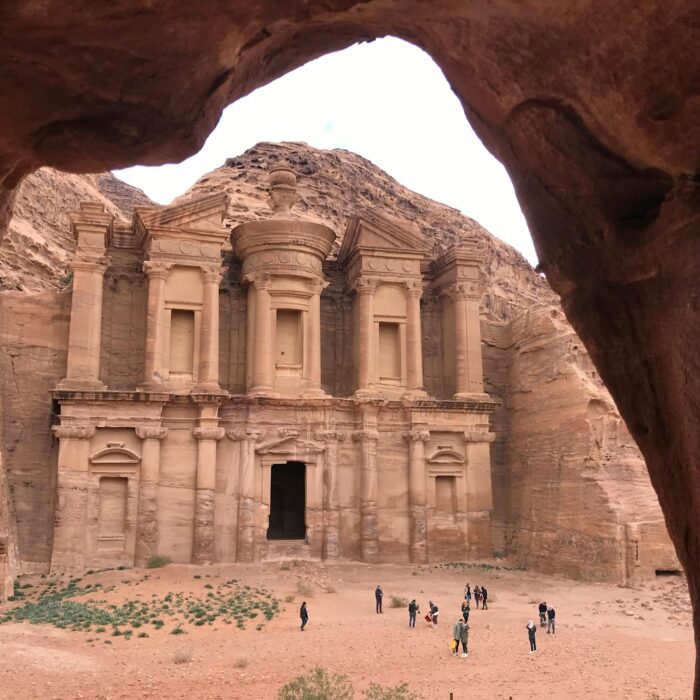Cradled in the heart of Central Asia, Kyrgyzstan is one of the region’s most breathtaking – and still wildly underrated – destinations. With towering peaks, turquoise lakes, and wide open valleys, it’s a country built for adventure and quiet wonder.
This is where you can trek across alpine passes, sleep in a yurt under the stars, or ride horseback through high-mountain pastures once traveled by Silk Road caravans. In many parts of the country, nomadic life isn’t a show – it’s still real, and visitors are welcomed with warm tea, fresh bread, and heartfelt hospitality.
Kyrgyzstan isn’t polished – and that’s its charm. You come here for the raw beauty, the untouched wilderness, and the chance to unplug from modern life and connect with something timeless.
Expect: glacier-fed lakes, snowy trails, eagle hunters, open skies, and a slower rhythm of life that stays with you long after you’ve left.
Best Cities to Visit
Bishkek
Bishkek isn’t a city of grand landmarks – and that’s exactly why you’ll like it. It’s laid-back, leafy, and unpretentious, with snow-capped peaks always hovering on the horizon. Think of it as your perfect basecamp: easy to navigate, full of character, and just hours from wild nature.
This is the kind of place where you can spend your morning sipping strong coffee under Soviet mosaics, your afternoon bargaining for spices and dried fruit at the buzzing Osh Bazaar, and your evening watching the sun set over the Tian Shan Mountains from a rooftop bar.
You’ll find wide green boulevards, Ala-Too Square with its changing of the guard, and Oak Park, where locals play chess, nap in the grass, or debate politics over tea. There’s also a growing scene of indie cafés, galleries, and music collectives – a creative heartbeat in a city still shaking off its Soviet shell.
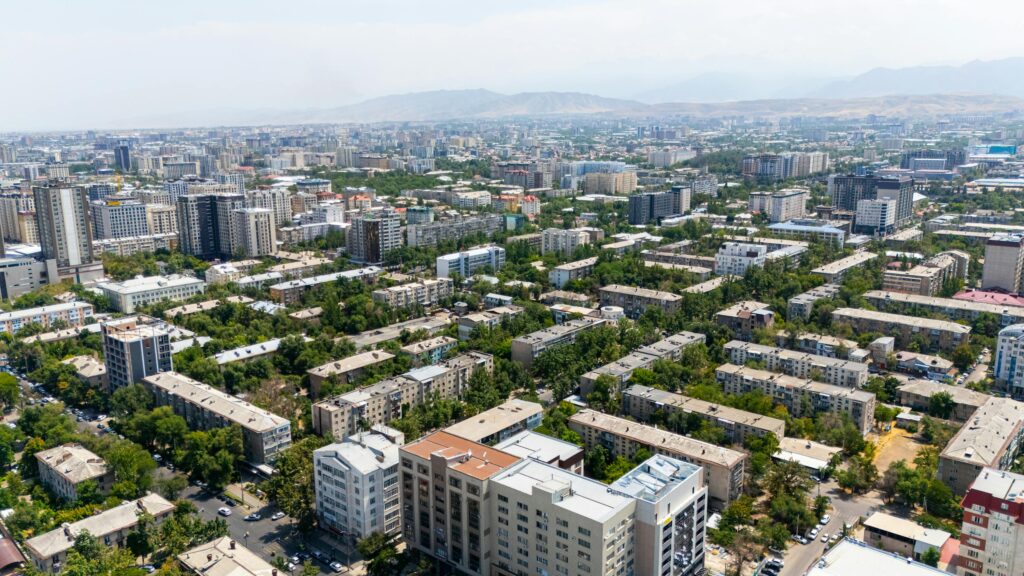
Osh
If Bishkek is modern Kyrgyzstan’s heart, Osh is its memory – gritty, soulful, and layered with over 3,000 years of history. It’s one of the oldest cities in Central Asia, and you feel it in the air: in the smell of fresh bread at sunrise, in the call to prayer echoing off the hills, in the rhythm of the bazaar.
The city’s sacred centerpiece is Sulayman-Too, a rocky mountain that rises above Osh and has been a place of pilgrimage since pre-Islamic times. Hike to the top and you’ll pass caves, shrines, petroglyphs, and panoramic views of the Fergana Valley. It’s not just a UNESCO site – it’s a living part of local life.
Just outside the city, the Uzgen ruins offer a glimpse into the past when this area was a key Silk Road hub, complete with ancient minarets and mausoleums.
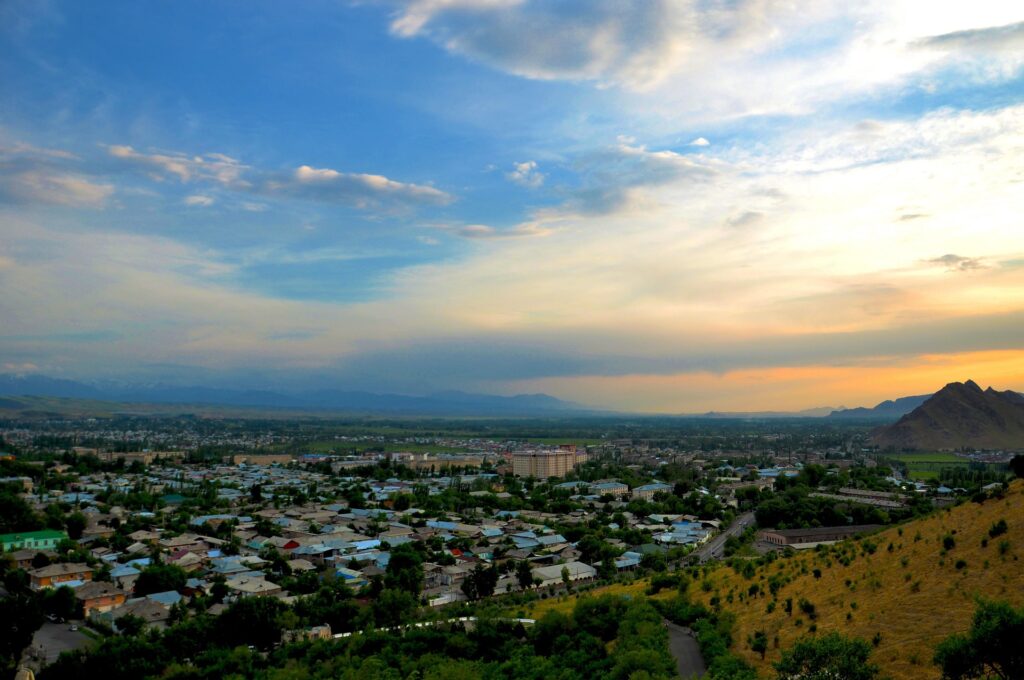
Karakol
Karakol is a small, easygoing town on the eastern side of Lake Issyk-Kul, known as one of the best starting points for mountain adventures in Kyrgyzstan. It’s a practical base with good infrastructure, local guesthouses, and access to top hiking areas.
In town, you can visit the Dungan Mosque – a wooden structure built without nails by the Chinese-Muslim Dungan community – and the Russian Orthodox Church, a 19th-century building made of carved timber. Both reflect Karakol’s mix of cultures.
Every Sunday, Karakol hosts a large animal market, where local farmers trade sheep, horses, and cattle. It’s not staged for tourists and offers a real look at Kyrgyz rural life.
Most travelers use Karakol as a launch point for treks:
- Altyn Arashan – A popular valley with hot springs, basic mountain lodges, and stunning alpine views. Reachable by hike or off-road vehicle.
- Jeti-Ögüz – Known for its red rock formations and yurts in the valley. Easy day trip or overnight in the summer.
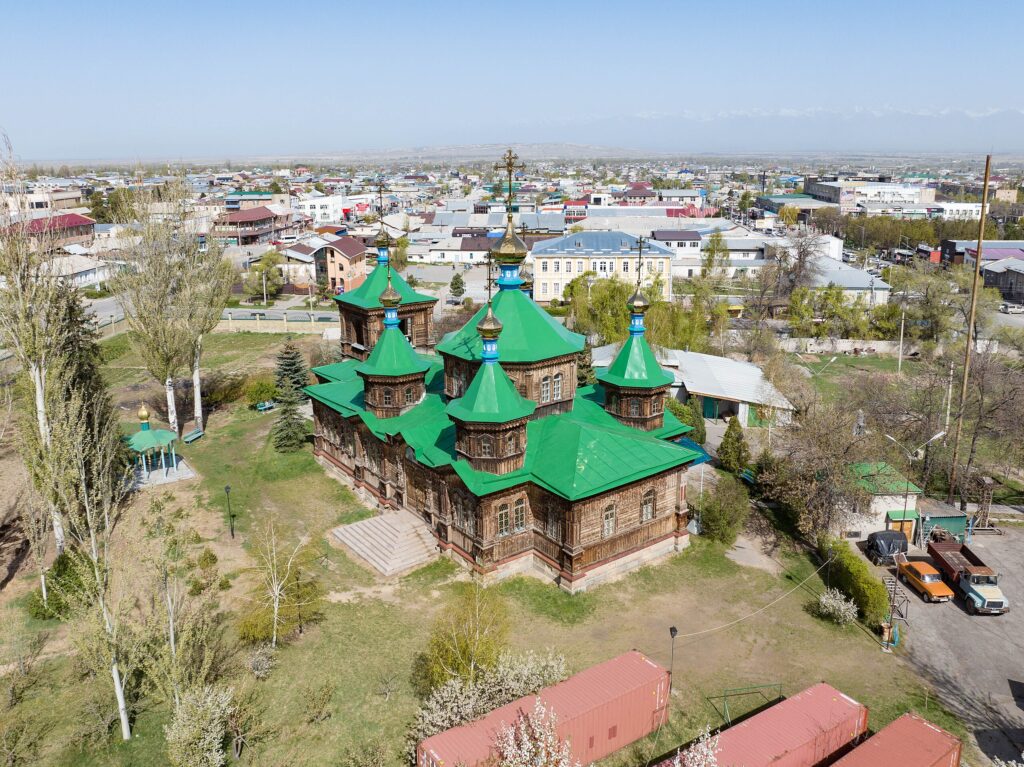
Cholpon-Ata
Located on the north shore of Lake Issyk-Kul, Cholpon-Ata is one of Kyrgyzstan’s most popular summer destinations. Locals come here for the beaches, clean mountain air, and easy access to the lake.
The town offers a mix of guesthouses, sanatoriums, and casual resorts, making it a good place to relax between treks or after time in the mountains. The waterfront is ideal for swimming, boating, and simple downtime.
Just outside town, the Cholpon-Ata Petroglyph Open-Air Museum features hundreds of rock carvings – some over 2,000 years old – scattered across a highland field with views of the lake and mountains.
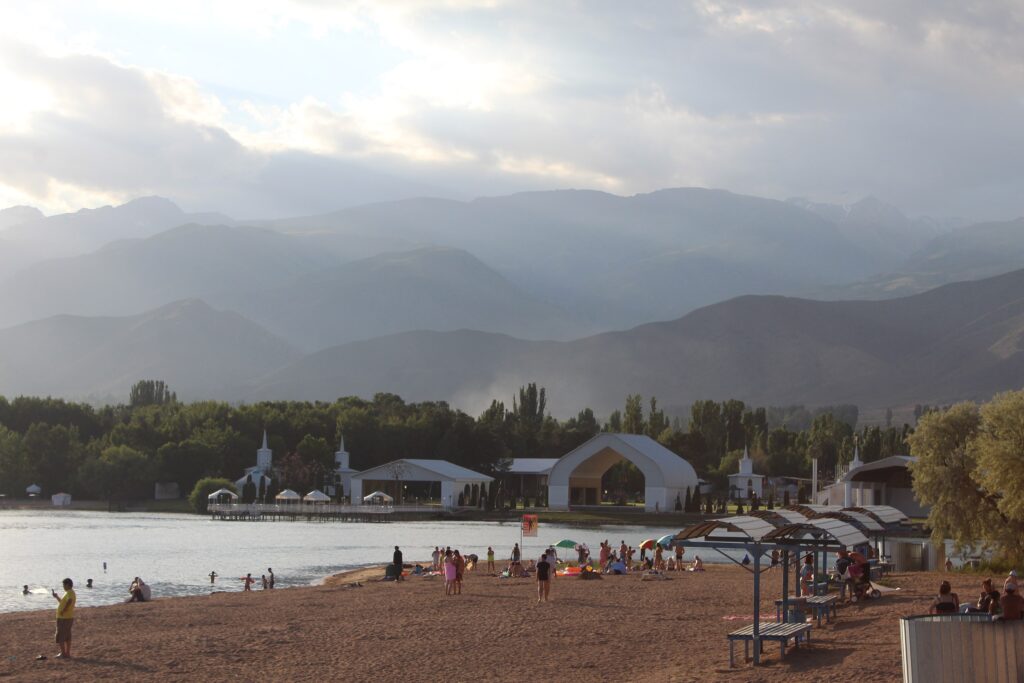
Best Natural Wonders
Issyk-Kul Lake
Issyk-Kul is one of the world’s largest alpine lakes and the main hub for summer tourism in Kyrgyzstan. Surrounded by snow-capped mountains but never freezing – even in winter – it’s often called the “hot lake.”
In summer, the north shore (especially towns like Cholpon-Ata and Bosteri) becomes a go-to spot for swimming, sailing, and beach camping, with plenty of guesthouses and resorts. The south shore is quieter, with fewer crowds and more access to hiking trails, yurt stays, and traditional festivals.
Issyk-Kul is also a good base for exploring nearby destinations like Karakol, Jeti-Ögüz, and Fairy Tale Canyon.
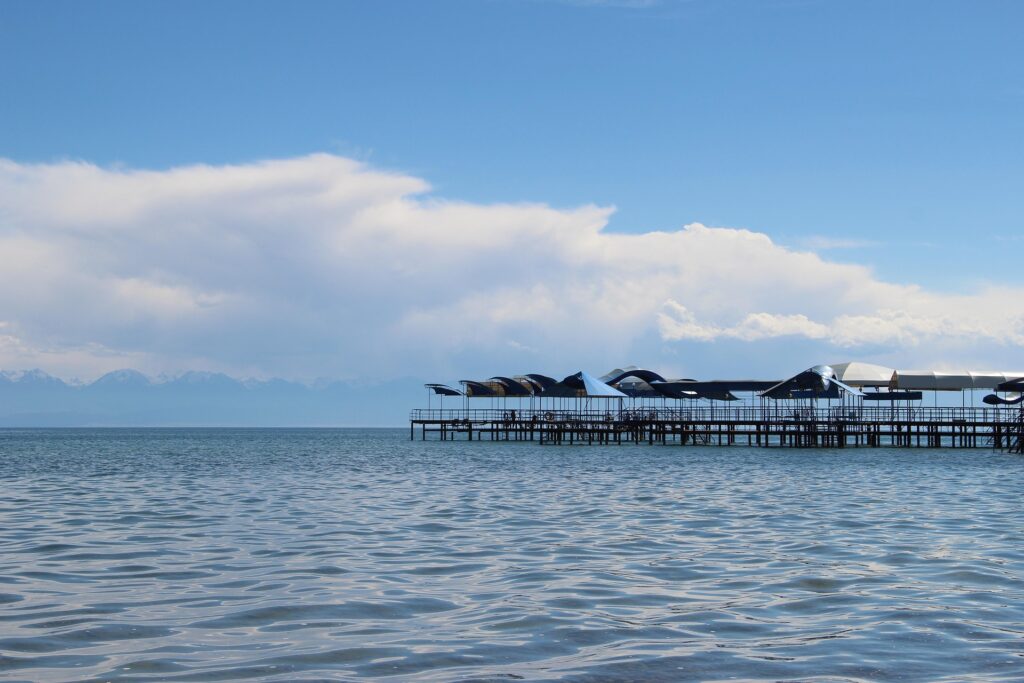
Ala Archa National Park
Only 40 minutes from Bishkek, Ala Archa National Park is the easiest way to experience Kyrgyzstan’s mountain scenery without leaving the city far behind. It’s a popular day trip for locals and travelers alike.
The park offers well-marked hiking trails ranging from short walks along the river to more challenging routes like the climb to the Ak-Sai Glacier. Multi-day treks and mountaineering routes are also available for more experienced adventurers.
The higher elevations are home to wildlife such as ibex, marmots, and, in rare cases, snow leopards.
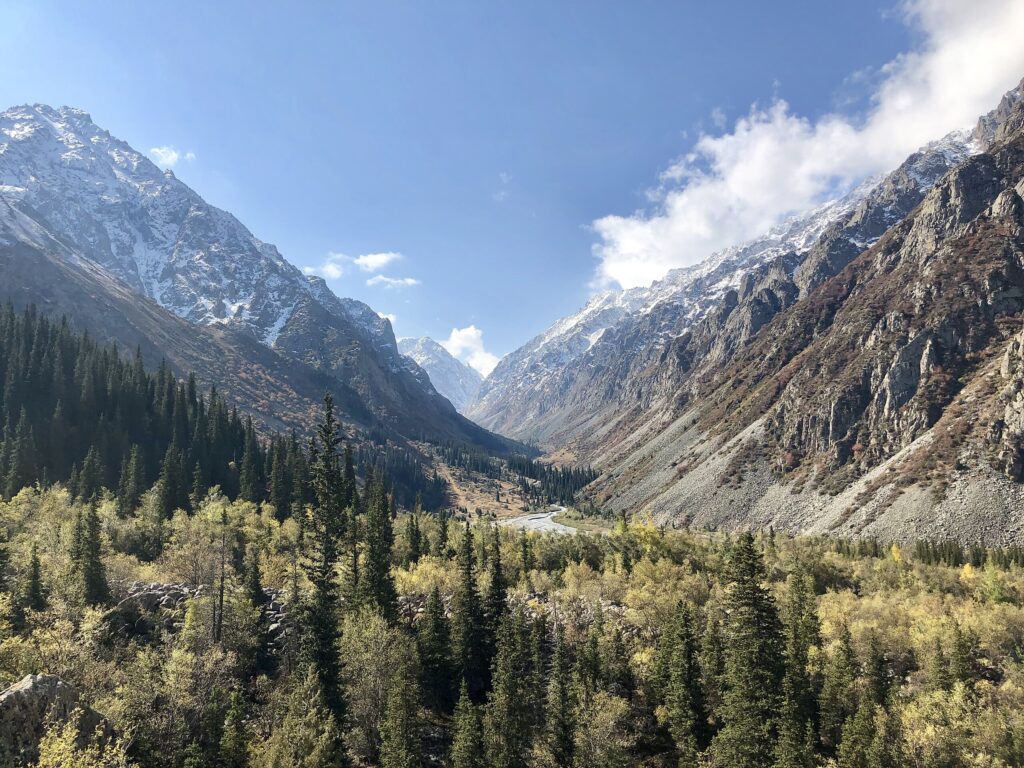
Song-Kul Lake
Sitting at 3,016 meters above sea level, Song-Kul Lake is one of Kyrgyzstan’s most scenic and remote destinations. Surrounded by open grasslands and snow-dusted peaks, it’s a place where semi-nomadic herders still graze their animals every summer.
Visitors can stay in yurt camps, eat home-cooked meals, ride horses across the plains, and enjoy clear night skies with no light pollution. It’s simple, peaceful, and completely off the grid – no Wi-Fi, no roads, just nature and tradition.
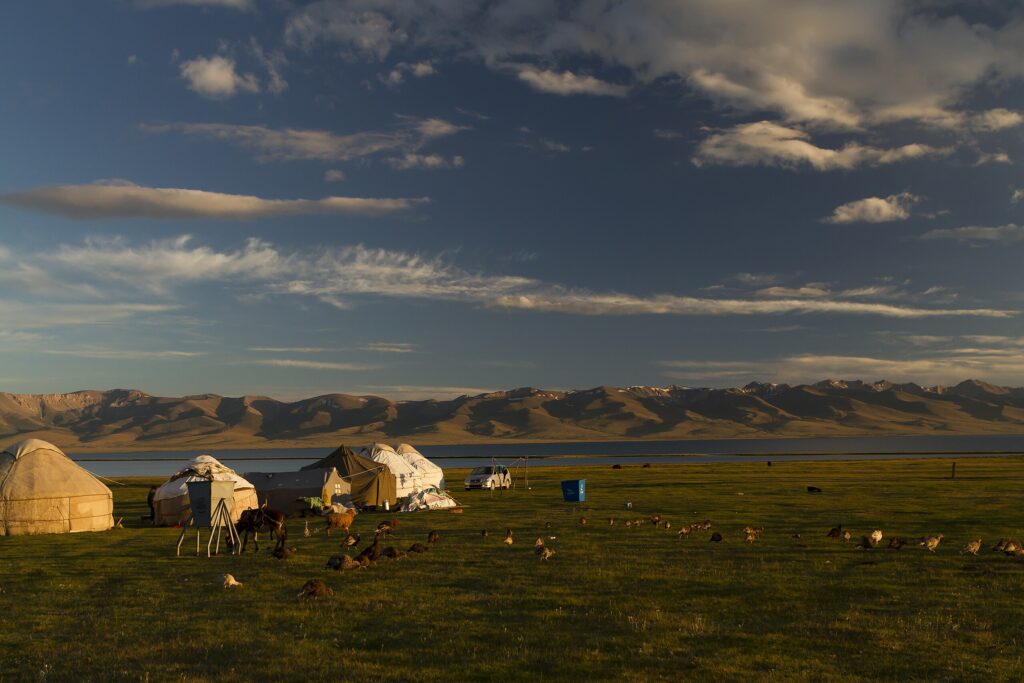
Sary-Chelek Biosphere Reserve
Located in western Kyrgyzstan, Sary-Chelek is one of the country’s most untouched natural areas – ideal for hikers, photographers, and wildlife enthusiasts. The reserve features deep blue lakes, alpine forests, and flower-filled meadows, with very little development or tourism infrastructure.
The main attraction is Sary-Chelek Lake, surrounded by steep cliffs and perfect for peaceful walks, birdwatching, and scenic camping. The area is part of a UNESCO biosphere reserve, home to rare plants, migratory birds, and occasional sightings of bears or lynx.
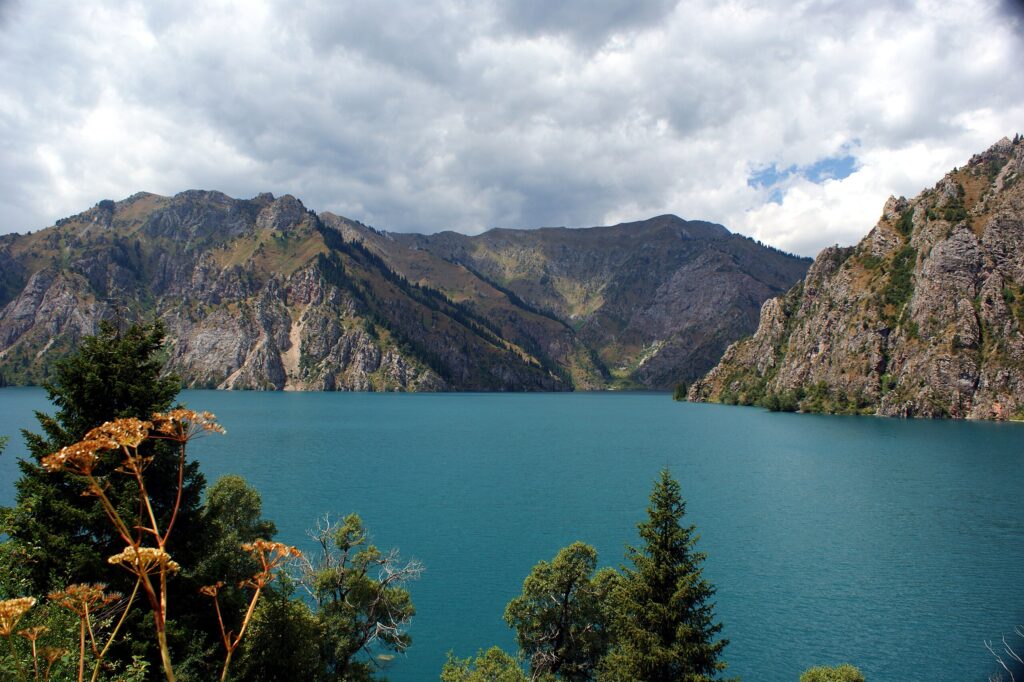
Tash Rabat
Located near the Chinese border at over 3,000 meters altitude, Tash Rabat is a well-preserved 15th-century caravanserai – once a resting place for Silk Road merchants and travelers.
Built entirely of stone and partly underground, it now sits in a remote alpine valley, surrounded by rolling hills and silence. Visitors can stay in nearby yurt camps and use the area as a base for horseback rides, short hikes, or simply enjoying the slow pace of mountain life.
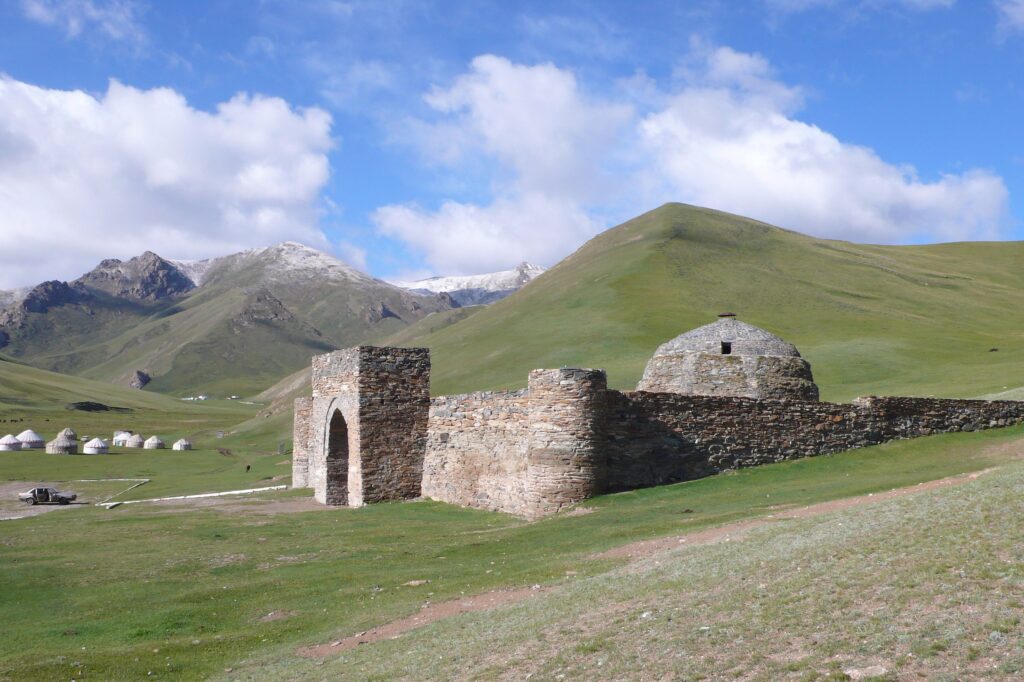
Kel-Suu Lake
Tucked away in the southeastern border region near China, Kel-Suu Lake is one of the most remote and visually stunning places in Kyrgyzstan. Surrounded by steep cliffs and filled with glacier-fed turquoise water, the lake feels completely untouched.
Getting there requires a 4WD vehicle, permits (due to its border location), and a short hike, but the reward is total silence and breathtaking alpine scenery – with almost no other visitors in sight.
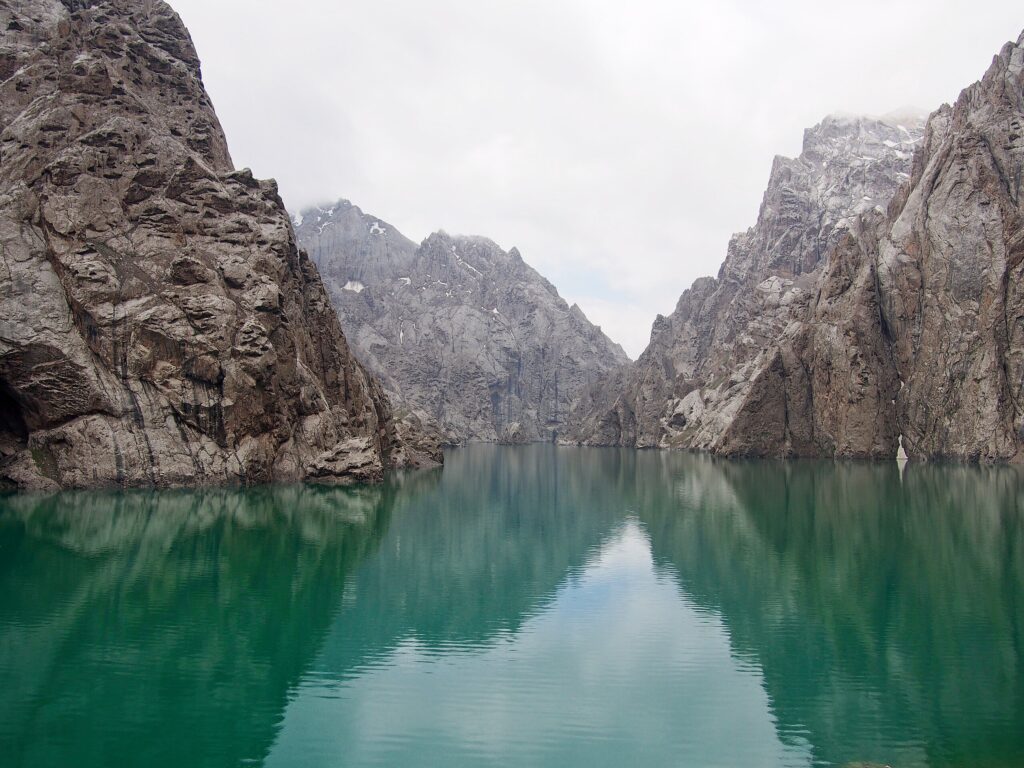
Hidden Gems of Kyrgyzstan
Jyrgalan Valley
Once a mining village, Jyrgalan has become one of Kyrgyzstan’s best spots for community-based tourism. Located just east of Karakol, it offers uncrowded trails, horse treks, and authentic homestays with local families.
In summer, explore lush valleys and panoramic ridgelines on foot or horseback. In winter, the area transforms into a destination for backcountry skiing with deep powder and zero crowds.
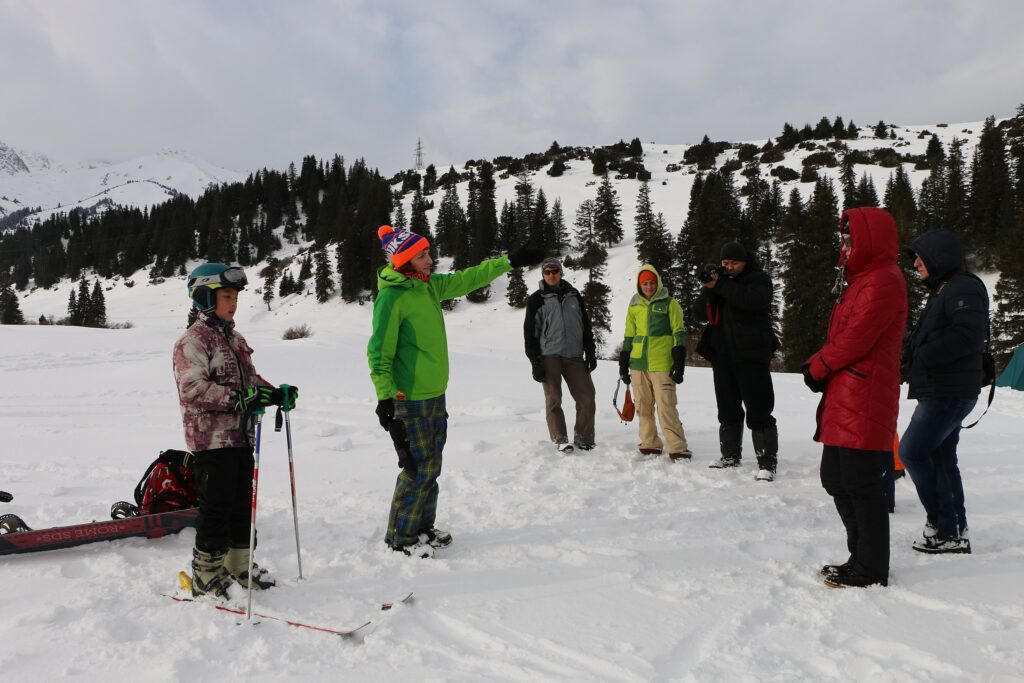
Arslanbob
Located in southern Kyrgyzstan, Arslanbob is known for its ancient walnut forests – the largest naturally growing ones in the world. The surrounding landscape features mountains, rivers, and waterfalls, making it a great spot for easy to moderate hiking.
The village has a strong Islamic and Uzbek cultural identity, and travelers are welcomed through local homestays that offer traditional meals and insight into rural life.
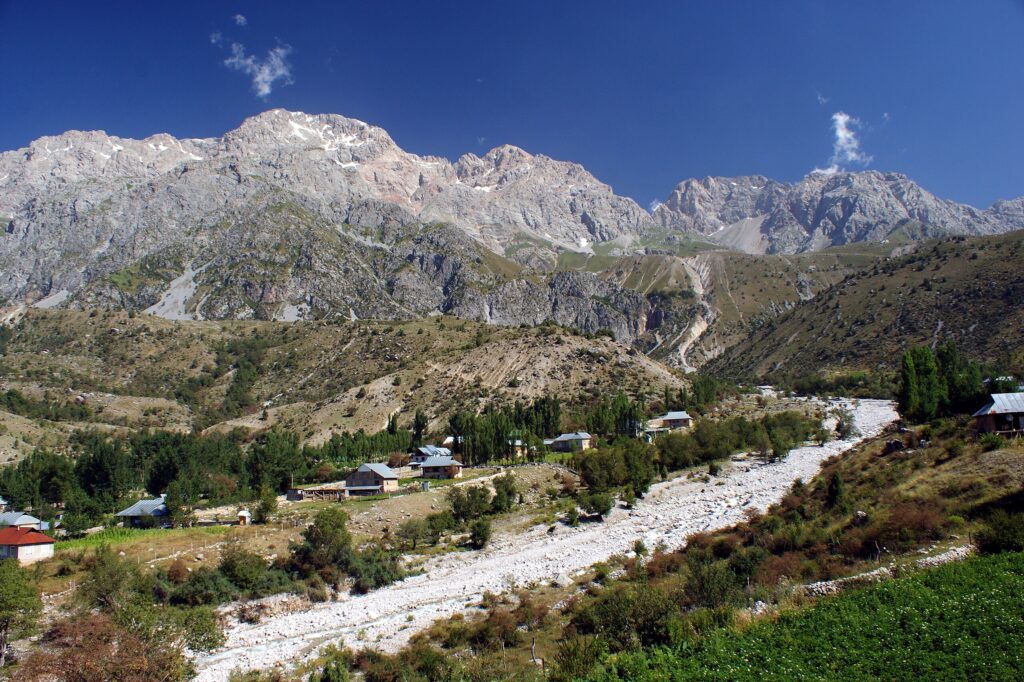
Köl-Tor Lake
Tucked in the Kegeti Gorge, just a couple of hours from Bishkek, Köl-Tor Lake is a brilliant turquoise glacial lake reached by a moderate 3–4 hour hike. The trail offers alpine views, pine forests, and a peaceful atmosphere with almost no crowds.
Despite its beauty, Köl-Tor remains one of the least visited lakes near the capital – perfect for a quiet day trip with fresh air, cold water, and total silence at the top.
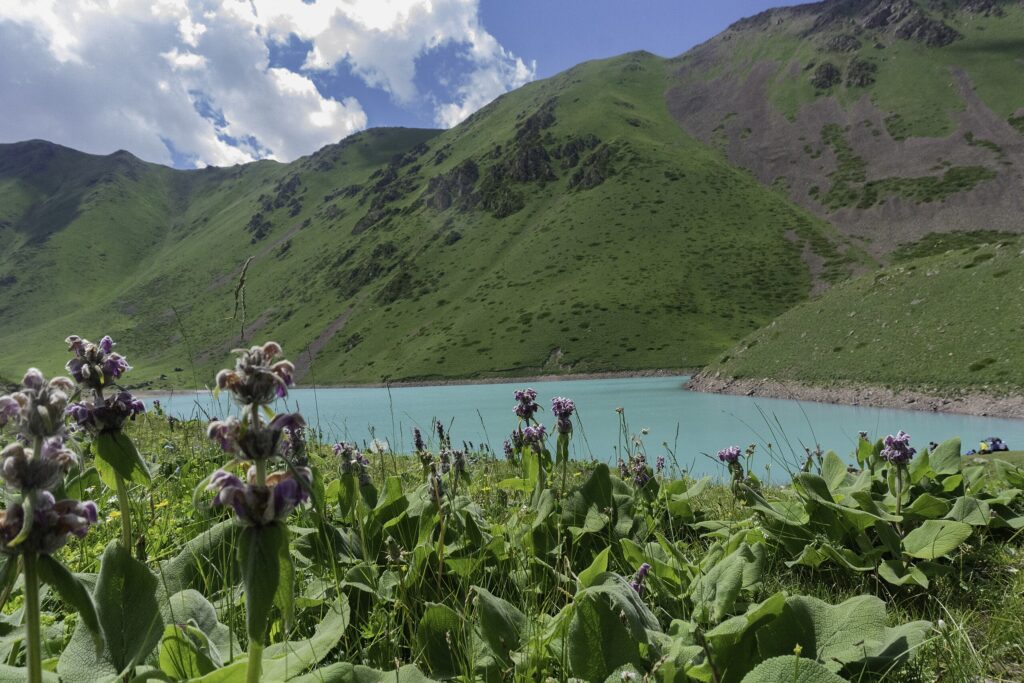
Sary-Tash
Located in southern Kyrgyzstan near the borders with Tajikistan and China, Sary-Tash is a remote mountain village with panoramic views of the Pamir range, including peaks over 7,000 meters.
It’s a key stop for overlanders and cyclists traveling the Pamir Highway or crossing into Central Asia. Accommodation is basic, but the landscape is dramatic and unforgettable – wide valleys, open skies, and total silence.
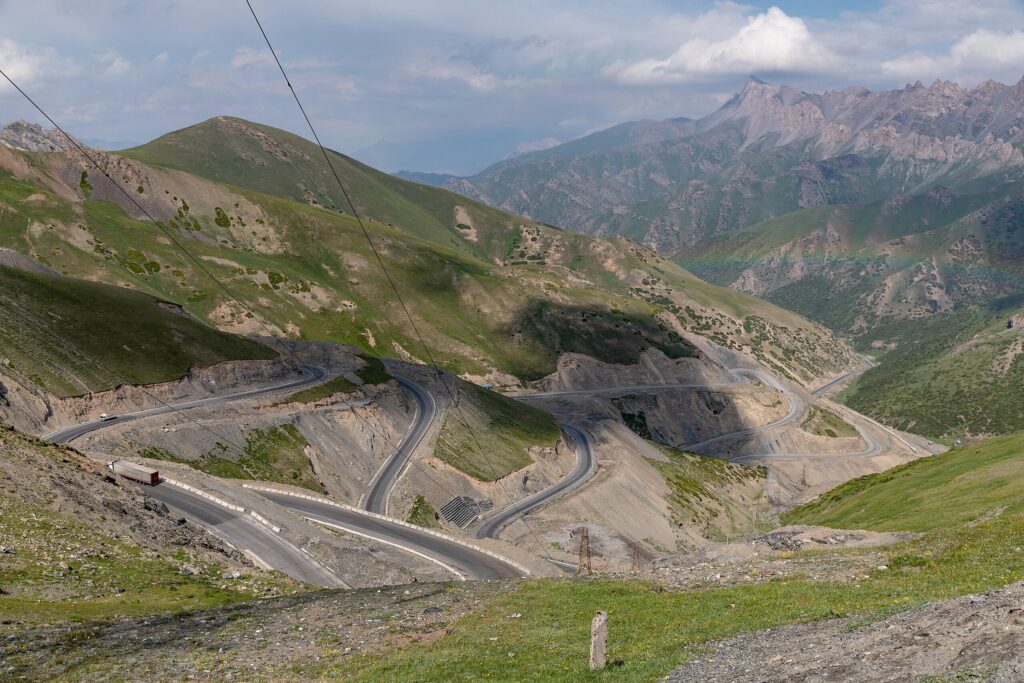
Chon-Kemin Valley
Located midway between Bishkek and Issyk-Kul, Chon-Kemin Valley is a quiet, green destination known for horseback riding, rafting, and eco-tourism. The valley features rolling hills, forests, and the Chon-Kemin River, making it great for weekend trips and nature-focused travelers.
Stay in local guesthouses, go birdwatching, or explore the area on foot or horseback – all with minimal crowds and authentic village hospitality.
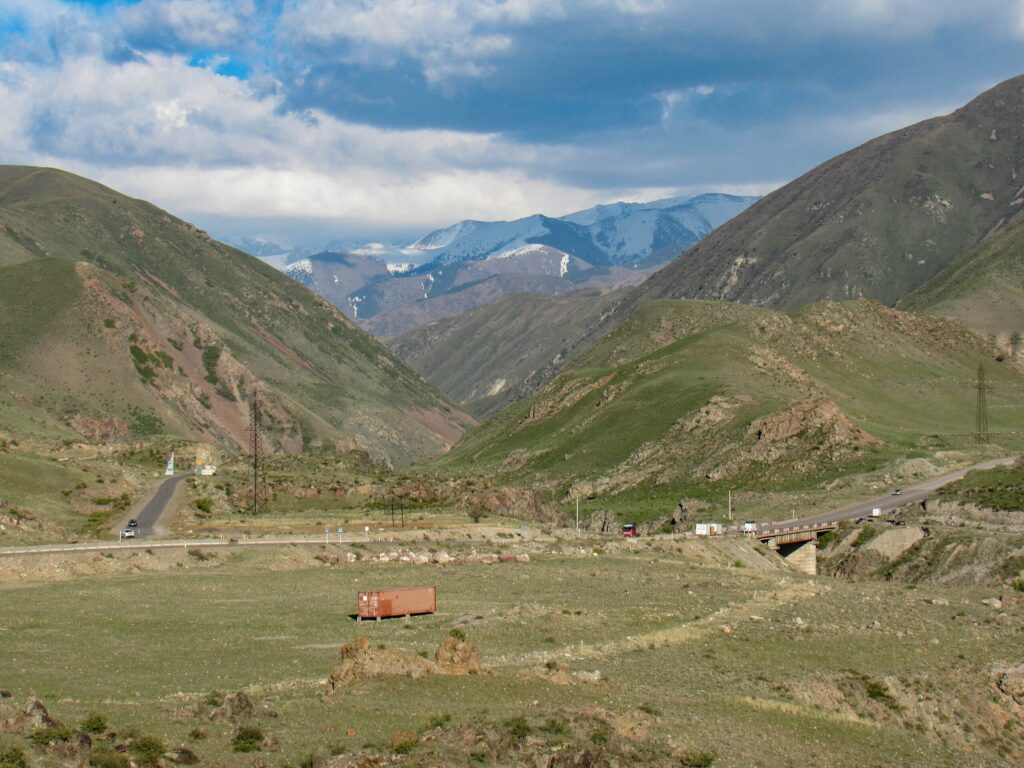
Best Cultural & Historical Landmarks
Burana Tower
Just outside Tokmok, about an hour from Bishkek, the Burana Tower is a well-preserved 24-meter minaret from the 9th century – one of the last remnants of the ancient Silk Road city of Balasagun.
Visitors can climb to the top for wide views of the Chuy Valley, and explore the on-site museum and a field of balbals – stone statues used as grave markers by Turkic nomads.
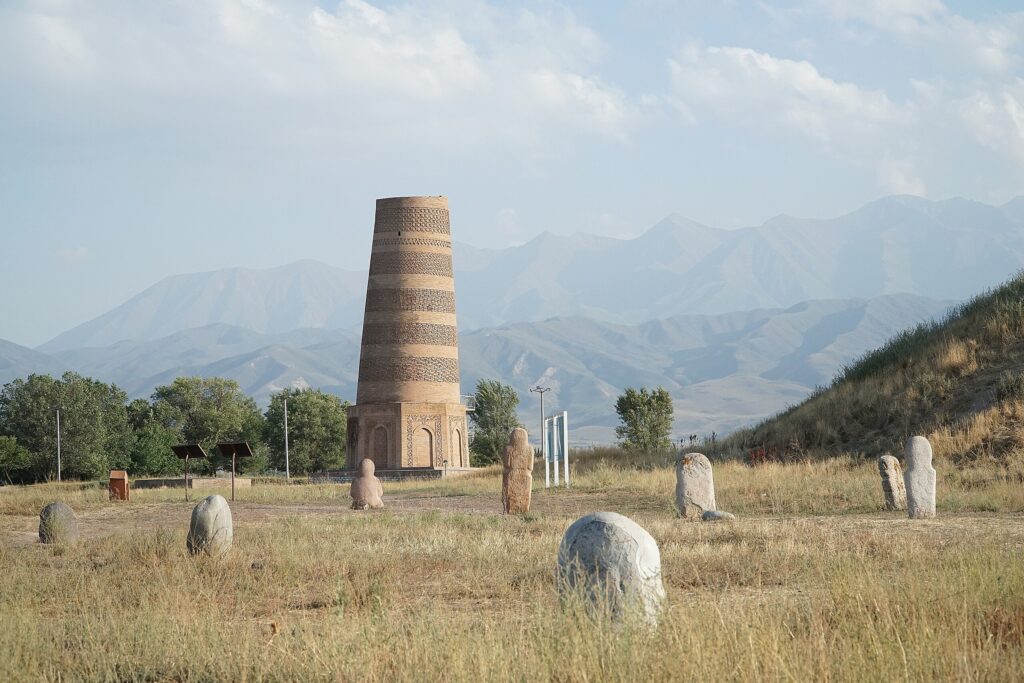
Sulayman-Too Sacred Mountain (Osh)
Towering above Osh, Sulayman-Too is a UNESCO World Heritage Site and one of Central Asia’s oldest Islamic pilgrimage sites, with roots stretching back over 1,000 years.
The mountain is home to caves, ancient shrines, petroglyphs, and the National Historical and Archaeological Museum, partly built into the rock. A short hike to the top offers panoramic views of the city and surrounding Fergana Valley.
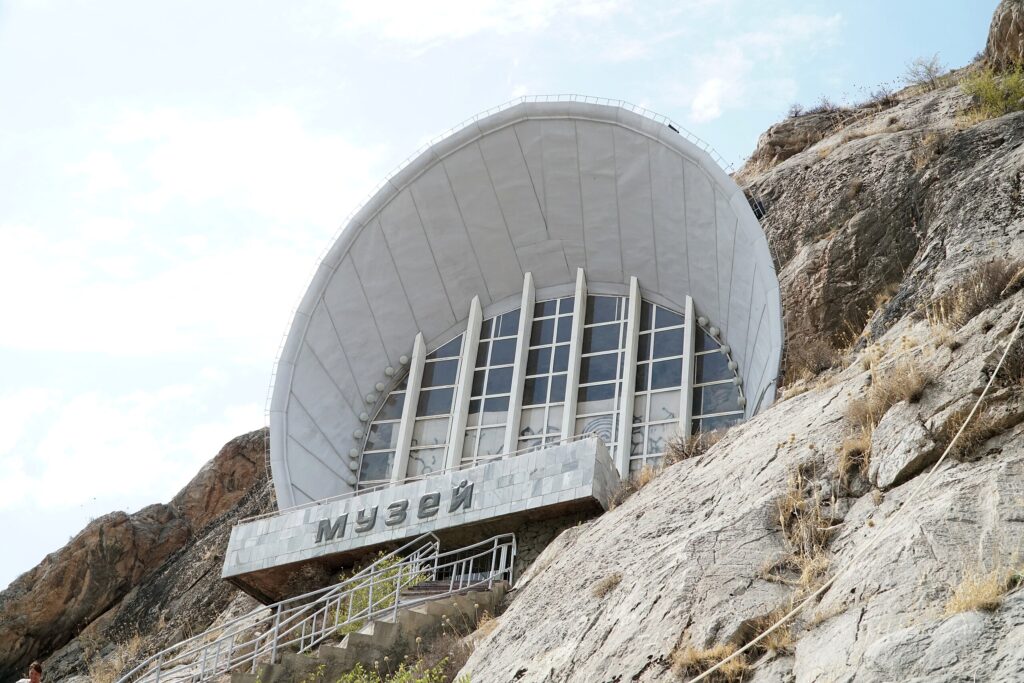
Petroglyphs of Cholpon-Ata
Just outside Cholpon-Ata, this open-air site features hundreds of petroglyphs dating back over 3,000 years. Carvings of ibex, hunters, and solar symbols are scattered across large boulders in a natural setting.
With the Tian Shan mountains behind and Lake Issyk-Kul in front, the site offers both historical insight and a peaceful atmosphere.
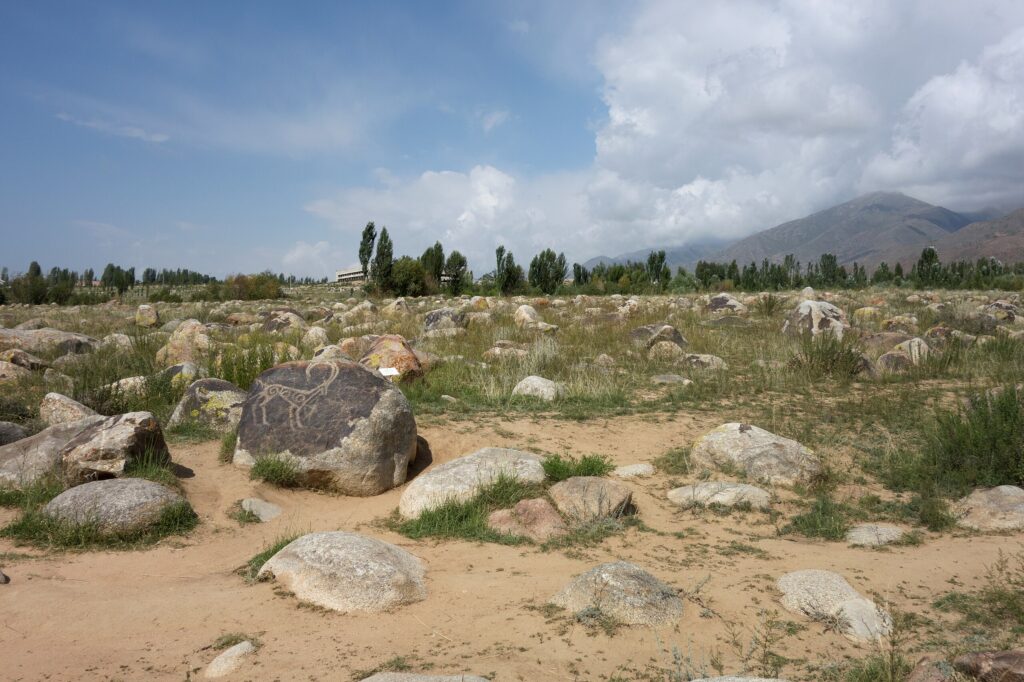
Nomadic Festivals
Throughout the year, Kyrgyzstan hosts festivals that showcase nomadic traditions – including eagle hunting demonstrations, yurt-building, and kok boru (a fierce horseback game often described as “goat polo”).
The most famous event is the World Nomad Games (held occasionally), bringing together athletes and performers from across Central Asia for traditional sports, music, and ceremonies.
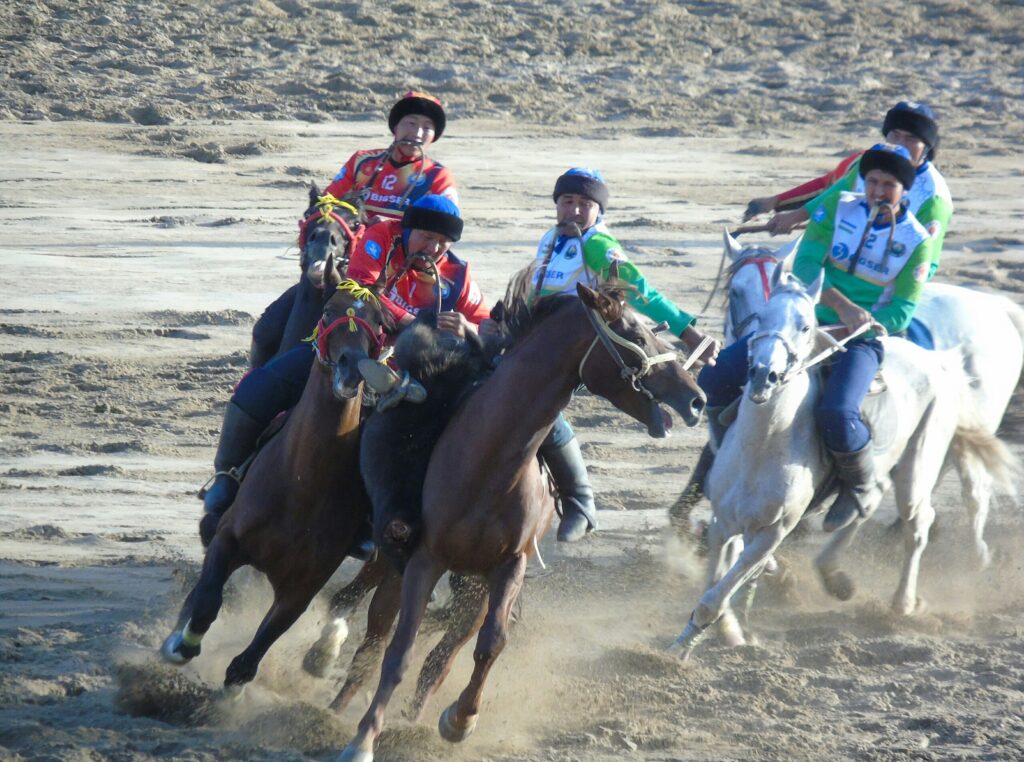
Culinary Guide to Kyrgyzstan
Key Dishes
- Beshbarmak – Boiled lamb or horse meat served over hand-cut noodles in broth. Eaten by hand in traditional settings.
- Lagman – Hand-pulled noodles with beef and vegetables, served either in broth or stir-fried.
- Manti – Steamed dumplings with minced meat or pumpkin, common at home and in cafes.
- Kuurdak – Fried meat (usually lamb or beef) with potatoes and onions. Often eaten during cold months.
Traditional Drinks
- Kymyz – Fermented mare’s milk, slightly alcoholic and sour. Widely consumed in rural areas during summer.
- Maksym – A fermented grain drink, sold chilled. Common street beverage in cities.
- Chai – Black or green tea, typically served with bread, sweets, or fried dough (baursak). Offered at every meal.
Markets Worth Visiting
- Osh Bazaar (Bishkek) – Good for spices, dried fruit, vegetables, household items, and clothing.
- Jayma Bazaar (Osh) – One of Kyrgyzstan’s busiest traditional markets. Excellent for local food, fabrics, and observing daily trade.
- Animal Markets – Weekly livestock markets (e.g., in Karakol). Best for seeing rural life and trade culture.
Travel Tips for Kyrgyzstan
When to Visit
- June to September – Best for mountain trekking, lake trips, and staying in yurts.
- April–May and September–October – Mild weather, fewer tourists, good for cultural visits and shorter hikes.
- December to March – Cold and snowy. Best for skiing in Karakol or Jyrgalan.
Visa Information
- Citizens of most Western countries (EU, UK, USA, Canada, etc.) can stay visa-free for up to 60 days.
- Others can apply for an eVisa online.
Language
- Kyrgyz – Official language, widely spoken in rural areas.
- Russian – Common in cities and for interethnic communication.
- English – Rare outside tourist areas. Knowing basic Kyrgyz or Russian phrases is helpful.
Currency and Payments
- Currency: Kyrgyz som (KGS).
- Cards: Accepted in cities, especially in hotels and large stores.
- Cash: Essential for markets, rural guesthouses, and transport.
Transportation and Driving
Getting Around
- Marshrutkas (minibuses) – Inexpensive and frequent. Used for local and intercity routes.
- Shared taxis – Fixed-price intercity rides. Often faster and more flexible than buses.
- Taxis – Affordable in cities. Use apps like Yandex Go or agree on a price in advance.
Driving
- Road conditions: Good near cities, poor or unpaved in remote areas.
- 4WD: Recommended for reaching lakes like Song-Kul, Kel-Suu, and other remote destinations.
- International Driving Permit: Required for renting and driving legally in Kyrgyzstan.
Kyrgyzstan is best suited for independent travelers who value nature, culture, and authenticity. The food is hearty, transport is basic but functional, and hospitality is strong – especially in rural areas. Preparation matters: carry cash, plan around weather, and be ready for limited infrastructure in the mountains.

Published July 06, 2025 • 12m to read

